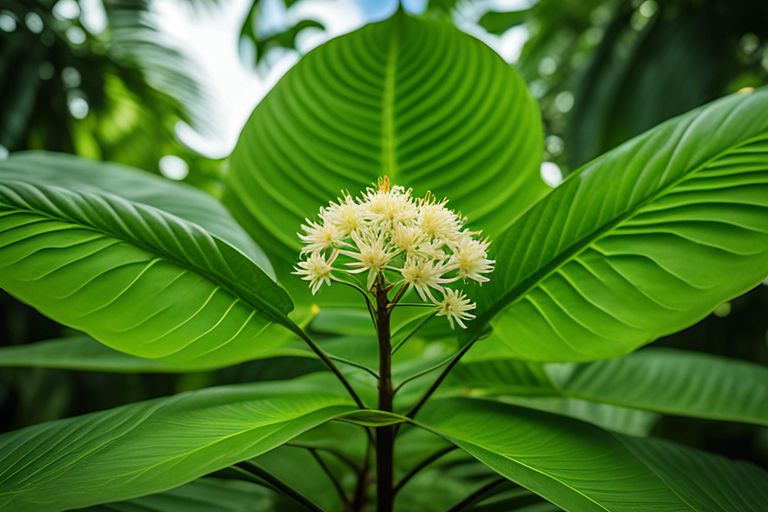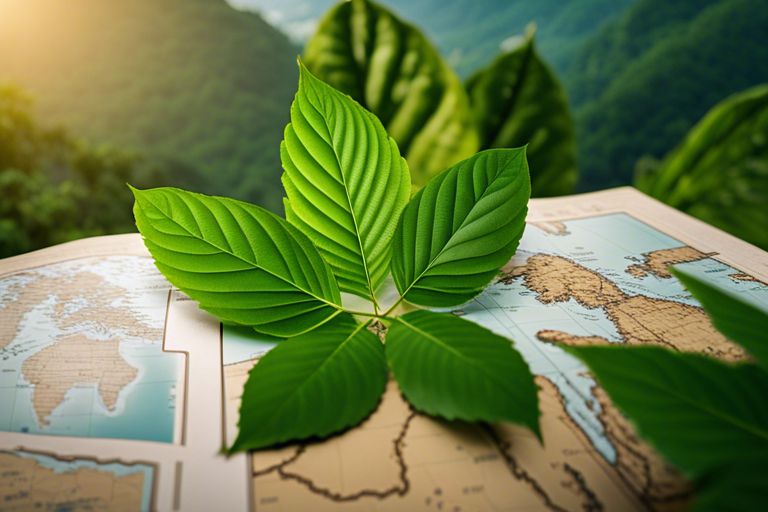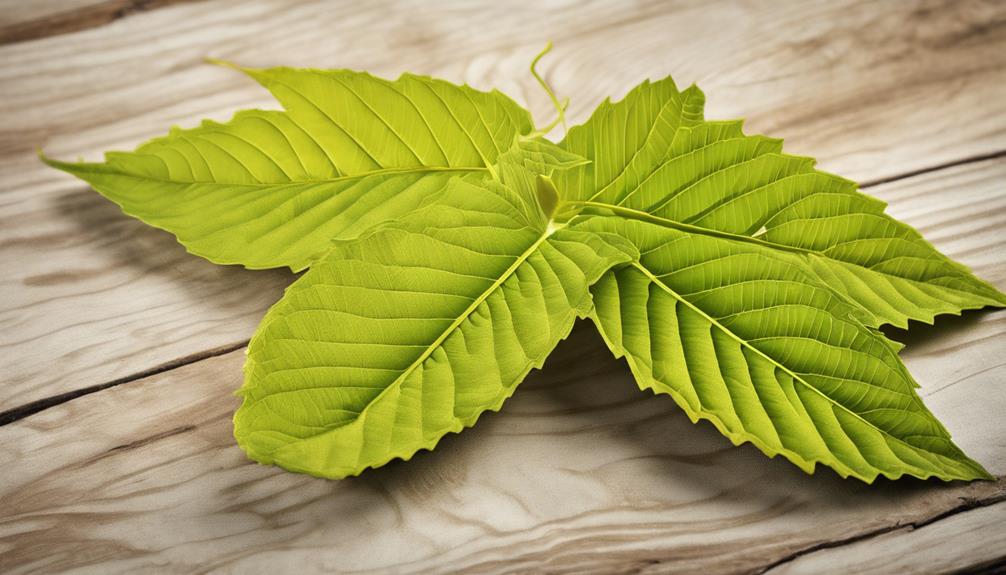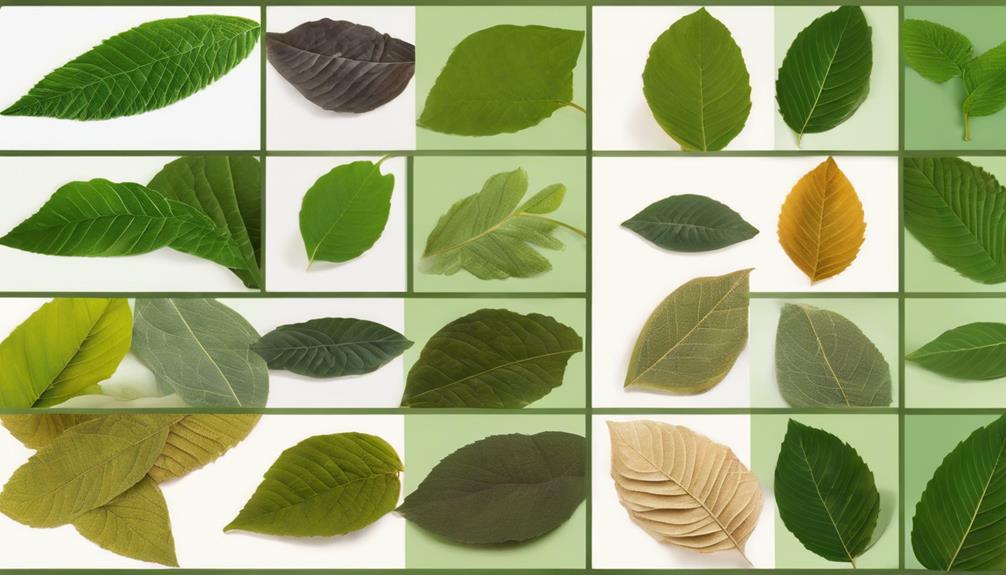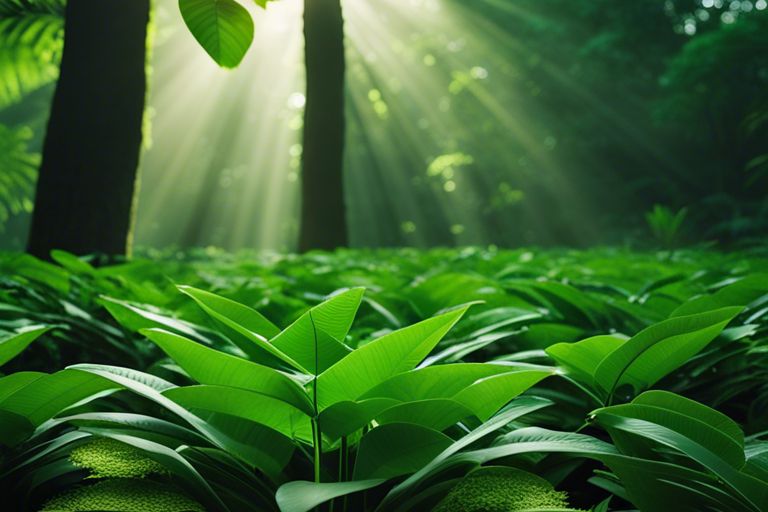Deprecated: mb_convert_encoding(): Handling HTML entities via mbstring is deprecated; use htmlspecialchars, htmlentities, or mb_encode_numericentity/mb_decode_numericentity instead in /home/users/kratomfiles/www/kratomfiles.com/wp-content/plugins/quick-adsense-reloaded/includes/template-functions.php on line 3552
When you step into the lush, forested regions of Southeast Asia, your eyes will likely be drawn to the vibrant hues of a kratom tree. With its glossy, emerald leaves and slender trunk reaching towards the sky, this botanical wonder exudes a sense of tranquility and natural beauty. As you observe the kratom tree’s elegant branches swaying gently in the breeze, you’ll feel a deep connection to the rich tapestry of nature that surrounds you. Exploring the intricacies of this fascinating plant will unveil a world of botanical marvels waiting to be discovered.

Physical Characteristics
Tree Size and Shape
Before you launch on discovering the wonders of the kratom tree, it’s important to understand its physical characteristics. Kratom trees can reach heights of up to 80 feet, with trunk diameters averaging 3 feet. The tree’s bark is smooth and grey, while its branches grow in a distinctive interlocking pattern, creating a symmetrical and aesthetically pleasing shape.
Leaf Structure and Color
For your observation, kratom leaves are glossy and dark green, similar to those of a magnolia tree. The leaves are ovate and grow in pairs on opposite sides of the stem. Young leaves tend to have a lighter green color and a soft, velvety texture, while mature leaves are sturdy and vibrant in color.
Leaf veins are prominently visible on the surface of the leaf, resembling the structure of a human hand. The central vein, known as the midrib, runs down the center of each leaflet, branching out into secondary veins that crisscross the leaf surface. This intricate network of veins is not only visually striking but also important for the transport of nutrients and water throughout the leaf.
Habitat and Growth Conditions
Native Regions and Climate
Growth: The kratom tree, also known as Mitragyna speciosa, is native to Southeast Asia, thriving in regions with tropical climates. The tree requires specific conditions to flourish, such as high humidity, ample sunlight, and rich, fertile soil. You will typically find kratom trees growing in countries like Thailand, Indonesia, Malaysia, and Papua New Guinea.
Soil and Water Requirements
For the kratom tree to thrive and reach its full potential, it is necessary to plant it in well-draining soil that is rich in organic matter. The soil should be slightly acidic with a pH level between 5.5 to 6.5. When considering watering your kratom tree, you must keep the soil consistently moist but not waterlogged. You can achieve this by watering the tree regularly, especially during dry periods, and ensuring proper drainage to prevent root rot.
Water: It is crucial to maintain a balance when watering your kratom tree. While it requires consistent moisture, overwatering can lead to issues such as root rot and fungal diseases. Monitor the soil’s moisture levels regularly and adjust your watering schedule accordingly to ensure your tree remains healthy and vibrant.
Identifying Features
Bark Patterns and Texture
To identify a kratom tree by its bark, look for smooth, greyish bark when the tree is young. As the kratom tree matures, the bark develops a rough texture with a light brown to gray color. The bark can become flaky and peel away in patches, revealing a reddish-brown inner bark.
Flower and Fruit Characteristics
The flowers of the kratom tree are small and grow in clusters at the ends of the branches. They have a unique appearance, with tiny white petals and light green sepals. The fruits of the kratom tree are oval-shaped capsules that contain numerous tiny seeds.
A mature kratom tree may produce both flowers and fruits simultaneously, adding to its distinct appearance. The contrast between the delicate white flowers and the green capsules can make the tree stand out in its natural environment.
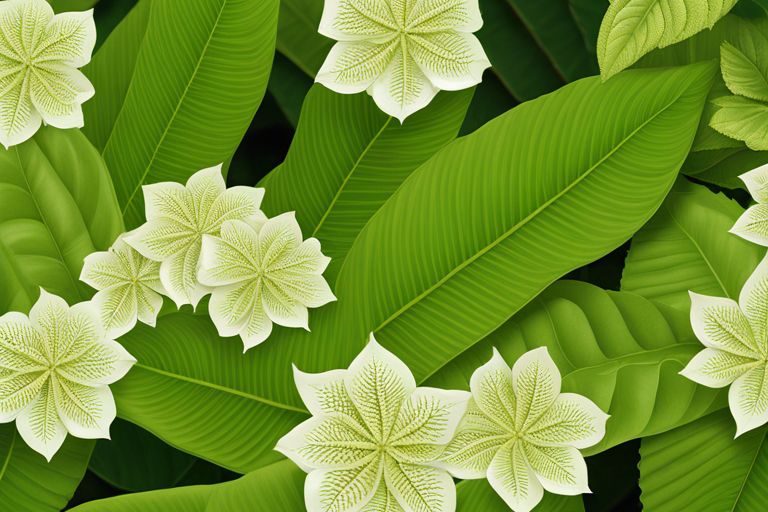
Comparison to Other Trees
Now, let’s explore how kratom trees compare to other species in the plant kingdom. Below is a comparison table outlining the similarities and distinctive features of kratom trees as compared to other trees.
| Similarities with Other Species | Distinctive Features of Kratom Trees |
Similarities with Other SpeciesAn interesting similarity between kratom trees and other species is their ability to thrive in tropical climates. |
Distinctive Features of Kratom TreesFor a distinctive feature, kratom trees have glossy, dark green leaves that are ovate-acuminate in shape. |
For a more detailed comparison, kratom trees share similarities with evergreen trees due to their ability to retain their foliage throughout the year. However, unlike most evergreens, kratom trees belong to the coffee family, Rubiaceae, which sets them apart in terms of botanical classification.
A fascinating characteristic of kratom trees that distinguishes them from other tree species is their unique alkaloid composition. Kratom leaves contain compounds such as mitragynine and 7-hydroxymitragynine, which contribute to their potential effects when consumed by humans. This distinctive feature has garnered attention from enthusiasts of natural remedies and herbal supplements.
Cultivation and Care
Not only is it fascinating to learn about the appearance of a kratom tree, but it can be equally fulfilling to cultivate and care for one. Kratom trees thrive in tropical environments and require specific conditions to grow successfully. Here are some tips on how to cultivate and care for your very own kratom tree.
Planting and Propagation
One common method of propagating kratom trees is through seeds. It’s vital to obtain fresh seeds from a reliable source and plant them in fertile soil. Keep the soil consistently moist and place the seeds in a warm, humid environment to encourage germination. Once the seeds sprout, you can transplant them into larger containers and eventually into the ground if you live in a suitable climate.
Pruning and Maintenance
Any plant requires regular pruning and maintenance to stay healthy, and kratom trees are no exception. Pruning helps promote growth, maintain shape, and prevent disease. You can trim back overgrown branches, remove damaged leaves, and shape the tree to your desired form. Regularly check for pests or diseases and address any issues promptly to keep your kratom tree flourishing.
Another vital aspect of caring for your kratom tree is providing it with proper nutrition. You can fertilize the soil with a balanced fertilizer to ensure your tree receives vital nutrients for healthy growth. Additionally, proper watering, adequate sunlight, and protection from harsh weather conditions are crucial for the overall well-being of your kratom tree.
Regional Variations
After growing familiar with the general appearance of kratom trees, you may start noticing the regional variations that contribute to the uniqueness of each tree. These differences can be seen in the leaf shape, color, and other characteristics that are influenced by the specific environment in which the tree grows.
Differences in Leaf Shape and Color
Shape and color of kratom leaves can vary depending on the region where the tree is found. In some areas, you may notice broader leaves with a darker green hue, while in others, the leaves may be narrower with a lighter shade of green. These variations can be subtle but are indicative of the specific strain and growing conditions of the tree.
Unique Characteristics of Specific Strains
With over 30 different kratom strains known to enthusiasts, each strain possesses unique characteristics that set it apart from the others. Some strains may have leaves that are more oval-shaped, while others exhibit a more pointed or jagged edge. Additionally, certain strains are known for their distinct color variations, such as red, green, or white veins running through the leaves, which further distinguish them from one another.
Characteristics such as potency, aroma, and overall effects can also vary between different strains, making each one a unique botanical specimen worthy of exploration and study. By familiarizing yourself with the specific traits of different kratom strains, you can deepen your understanding and appreciation of this fascinating tree and its diverse offerings.
Summing up
With these considerations in mind, you now have a better understanding of what a kratom tree looks like. From its distinctive oval-shaped leaves to its height ranging from 12 to 30 feet, the kratom tree’s appearance is unmistakable in the lush tropical regions where it thrives. Next time you come across a kratom tree, you’ll be able to easily identify it and appreciate its natural beauty.
Q: What does a kratom tree look like?
A: A kratom tree is a tropical evergreen tree that can grow up to 80 feet tall. It has glossy, dark green leaves that are oval-shaped and pointed at the tips.
Q: How can I identify a kratom tree?
A: Kratom trees have smooth, grey bark and typically grow in tropical climates with high humidity. They belong to the coffee family and produce small, ball-shaped clusters of flowers.
Q: What is the size of a kratom tree?
A: Kratom trees can vary in size depending on their age and growing conditions, but they typically grow to be between 25 to 80 feet tall.
Q: Do kratom trees have any distinctive features?
A: One distinctive feature of kratom trees is their dark green, glossy leaves that have a unique shape and texture. They also have a smooth, grey bark that sets them apart from other trees.
Q: Where are kratom trees commonly found?
A: Kratom trees are native to Southeast Asia and are commonly found in countries like Thailand, Malaysia, Indonesia, and Papua New Guinea.
Q: Can I grow a kratom tree in my backyard?
A: Kratom trees require a tropical climate with high humidity to thrive, so they may not be suitable for growing in all regions. However, they can be grown indoors in containers in colder climates.
Q: Are there different varieties of kratom trees?
A: Yes, there are several different varieties of kratom trees that can have slight variations in leaf shape, color, and alkaloid content. Some popular varieties include Maeng Da, Bali, and Borneo kratom.
